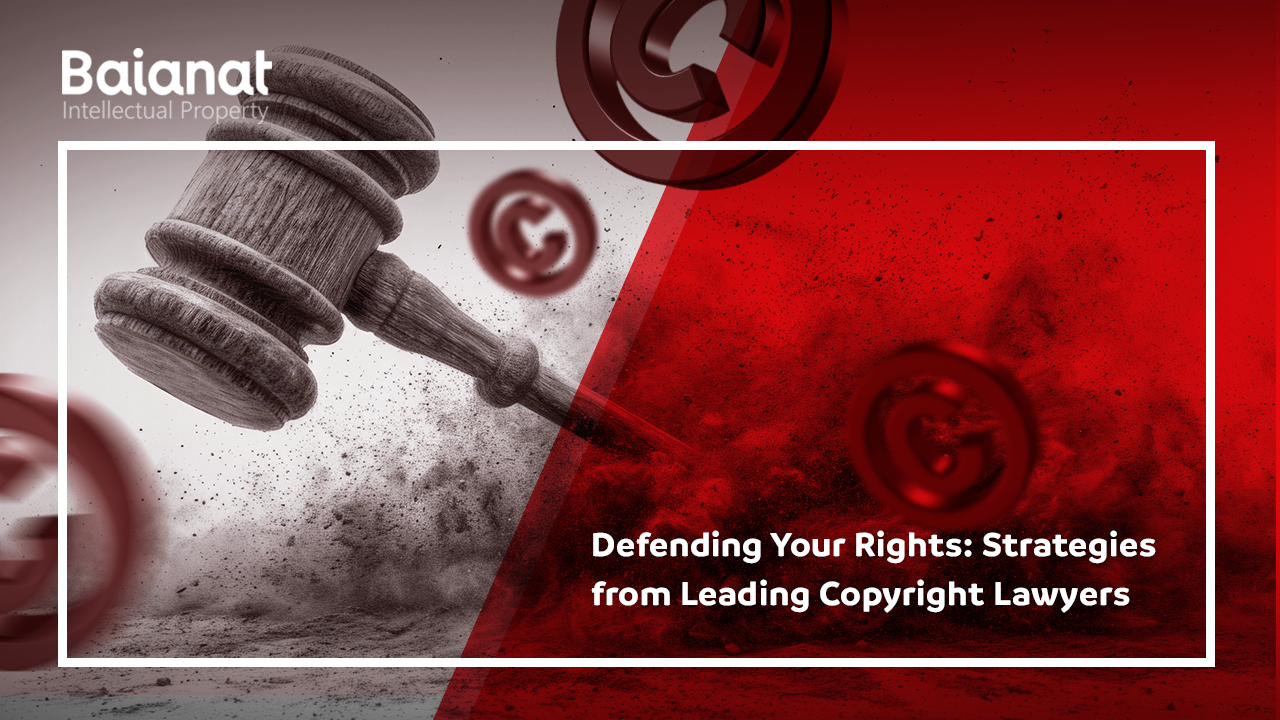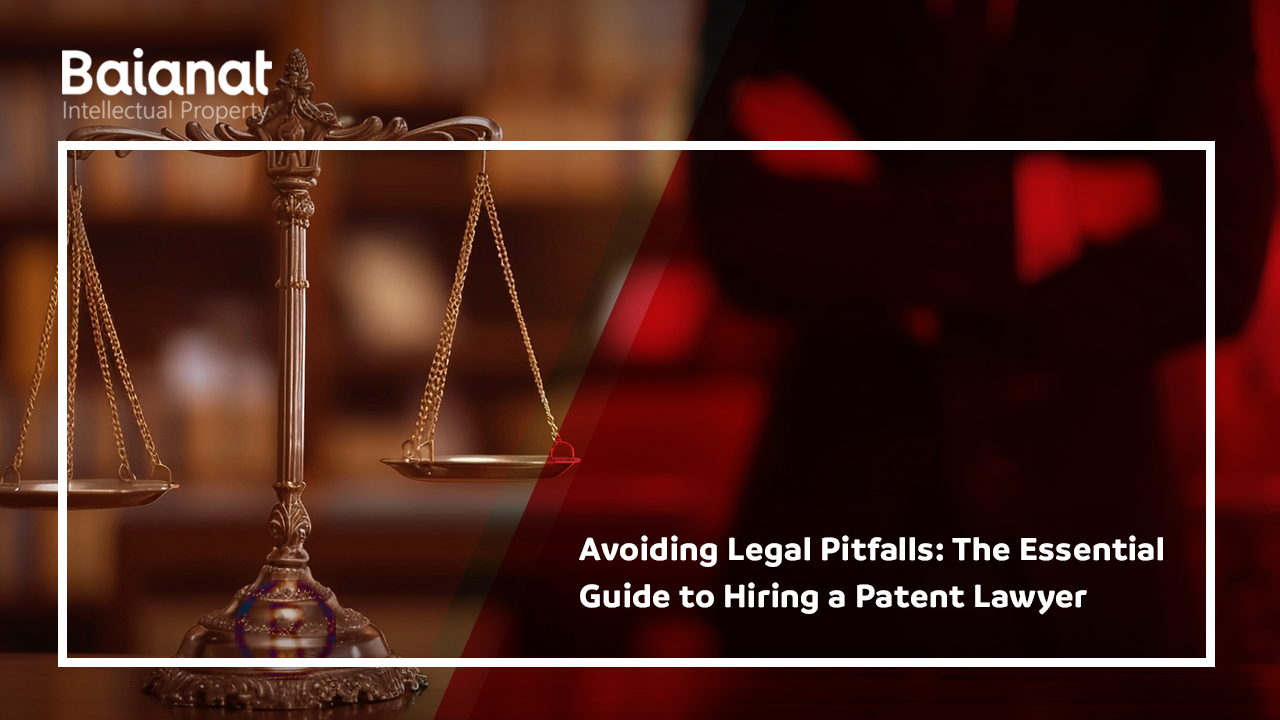Types of intellectual property in business
Many business might have creative ideas and visions they seek to implement in their market. However, they might be unaware of what type of Intellectual property they should have for protecting their ideas. They might even don’t know the meaning of Intellectual property and its importance for their business growth.
Some might even see the matters and procedures of Intellectual property as time-consuming and expensive, not knowing that ignoring or delaying it can result in the loss of their rights and liabilities
Grapping all of their attention toward embodying their ideas into the market is significant; nevertheless, protecting it from steal or fraud by competitors isn’t less important.
For this article, we will dive into five types of intellectual properties, unraveling the differences between them. So, keep reading.
intellectual property in business
Intellectual property refers to a set of intangible creative works of mind owned by a person or company. There are many forms of them such as patents, copyrights, and trademarks…
Since they have no physical form, they needed to be protected so no one can claim them for themselves or use them for their personal benefit.
Therefore, Intellectual property rights came into place to protect non-tangible assets and empower their owner whether it’s a company or a single person to benefit from them financially and morally. Also, it creates a protective environment where innovations and creative works can thrive, which, in turn, will impact economical systems positively.
Importance of intellectual property in business
As an entrepreneur, you may be overwhelmed by running many processes in your business especially when you’re just starting , however protecting your intangible assets is too important to keep in your mind. Here’re five reasons for those reasons for not overlooking it.
- Your intellectual property is a core of your business’s success so it needs to be protected and well-monitored
- Intellectual property protects your ideas from being easily stolen by other competitors in the arena or abusing it for their benefit.
- It offers you full authority to reap the financial benefits from your ideas which will maintain a constant flow of revenues and ensures your business is on a solid footing.
- It increases your clients’ credibility in your business and gives them the impression that your products are subject to the highest quality standards
- It convinces the stakeholders to invest in your entity, earning you more funds to develop your business.
- It gives you a right to grant franchises for other partners without risking your business, which means you can expand further and increase your cash flow by penetrating other markets.
- There’re also other indirect benefits. I.e, Some states offer tax exemptions or lower taxation for sold copyrighted products, which might increase your profits, given that maintaining the intellectual property is way less expensive compared to the profits you can gain if you’ve made it.
after knowing about intellectual property in business .. read more on baianat intellectual property
International Commercial Law Firms
Types of intellectual property in business
There are five types of intellectual property, and we’ll shed light on each in detail.
Copyrights
Copyright is a type of intellectual property that grants the owner exclusive authority over his original creative work for a specific limited time whether it’s a book, video, song, software, or artistic drawing. And the producer of the creative work is called a copyright owner
Since creative ideas can be so common among people, the purpose of copyright is to protect the original expression of the idea but not the ideal itself.
For anyone to receive copyright for his work, three elements shall be found
- Originality: It means simply, that work isn’t copied literally from anyone else (as we mentioned before people might share the same ideas but originality means each one has its way of expressing an idea.
Creativity: The U.S. Supreme Court states that work only has a degree of creativity to receive copyright.
Fixation: For the work to be fixed, it has to be captured in a medium through which it can be produced and rendered visible to the public. For example, a book or CD is a fixed medium for the author’s ideas.
Laws of copyright
These might vary from one state to another. For our concerns are more especially to the KSA market, we’ll focus only on some of the principal rights of the author in the Saudi kingdom.
- Copyright is received for work of any type, joint works, creative works, audio or audio-visual work, or decorative works (such as works of translation, Encyclopedias, and anthologies).
- The Law shall protect the works created in the fields of literature, art, and sciences, irrespective of their type, means of expression, importance, or purpose of authorship
- Works excluded from protection include Laws, regulations, judicial rulings, procedures, working methods, mathematical science concepts, abstract facts, and daily news published by newspapers and magazines.
- The law entitles the author’s moral rights to attribute the work for himself or publish it under an anonymous name, protecting the work from any infringement (I.e deletion, addition, distortion, and making all amendments or withdrawing his work from circulation at his discretion.
- The law entitles the author’s financial rights to print and publish the work, translate it into another language or communicate it to the public via any medium, besides all forms of financial benefits from the work.
- In the case of joint works between two or more parties, each person is given equal ownership in the work and no one is allowed to exercise the rights included unless there’s a written document permitting that.
- However, if their collective works can be separated, each party has the right to exploit his part, provided that no damage might occur due to the exploitation unless otherwise agreed.
after knowing about intellectual property in business .. read more on baianat intellectual property
How to copyright a book before publishing

Importance Of Copyright In Business
The protection period of copyrights
According to the Saudi Authority for intellectual property, the protection period of copyright of the work shall continue throughout the life of the author, and for fifty years after his death. However, for joint works, the protection period shall be counted from the death date of the last surviving author.
Also, If the work is composed of several parts or volumes that are published separately or at intervals; each part or volume thereof shall be considered separate and its protection period starts from its publication.
Trademark
A trademark is a sign whose function is to distinguish a product or services of one company from other competitors. This sign can be a word, group of words, signatures, letters, symbols, numbers, addresses, seals, drawings, images, scriptures, packaging, figurative elements, figures, colors, or combinations thereof.
Trademarks are exclusive to the products and used to differentiate them from other competitors, making them more recognizable and more fixed in customers’ minds. For example, when you see the word Google, you recall the six spate letters with their colors.
Registering your business’ trademark is important for any entrepreneur to avoid risks from forfeited attempts of competitors to claim their products under his name.
Trademarks can be categorized into five groups according to their potential for registration. This table will show each category in detail.
| Category | Meaning | Potential for registration | Example |
| In Invented or imagined trademark
|
They can be words or images that haven’t existed before and have no real meaning | These are the strongest trademarks and are the most likely to get registration.
|
|
| Arbitrary trademark | They can be words or images that already existed but it has no relation to the products the business offers | Generally, they get registration. | Apple
It isn’t suggestive to a juice-producing company but a technological giant |
| Suggestive trademark | They can be words or images that describe the attributes of the products or services without stating them frankly | In some countries, they may be considered overly descriptive and may be rejected. | sunny
as a trademark for a lamp-producing manufacturer, implying that the product brings light into homes |
| Descriptive trademarks | They’re words that identify the characteristics of a product or service. It is similar to an adjective | Since they’re no distinct, they’re not likely to be registered unless they gained a distinguished impression with their intensive usage in the market | The word Sweet is a trademark for a company that produces chocolate |
| General trademarks | · It’s a word or sign for the being to which it applies. | It’s neither distinguished nor registered | The word chair as a trademark for a chair manufacturer |
Services for trademark protection
Services of trademark includes
- Trademark registration
- Trademark renewal
- Amendment of the trademark’s data or its images
- Search for an appropriate trademark
- Obtaining a true copy of the registration certificate
- Issuing a certificate of deposit
- Transfer of ownership
- Applying for or canceling the license
According to Saudi Authority for intellectual property, the protection period for a trademark is Ten years (renewable).
Trade secrets
include any information pertaining to practices or processes that run inside the company and shouldn’t be disclosed to the public or the competitors. In general, any confidential commercial information that gives the company a competitive advantage and is not known to others may be protected as a trade secret
Trade secrets include technical information, such as manufacturing processes, pharmaceutical data, graphical drawings, and commercial information, such as distribution channels, lists of suppliers and customers, and advertising strategies.
Other examples of information that may be protected under trade secrets are financial information, formulas, recipes, and source codes.
In general, there are three conditions for information to be three secrets
- To have a commercial value
- It’s only known to a small group of people
- It’s subject to reasonable procedures by owners to maintain its secrecy, such as conducting agreements between employees and business partners
Patent
According to terminology, an invention means an idea that aims for solving a technical problem
A patent, on the other hand, is an exclusive right that entitles its owner a full authority to decide how – or whether – others can use his invention, and prevents the public from exploiting his invention without his approval.
In return, the patent owner makes the technical information about the invention available to the public in a published patent document.
To have granted a patent, the invention should meet three criteria
- Novelty
That means your innovation isn’t shown to the public, not even by yourself before the date it has been patented
- Inventive step
It means your innovation should have an obvious innovative solution that isn’t obvious to the manufacturers. Inventive steps ensure that innovation isn’t just a slight improvement for an already existing innovation.
- Industrial applicability
It means simply you can put your innovation into practical manufacturing
According to Saudi Authority for intellectual property, the term of patent protection is twenty years from the date of application.
Industrial design certificate
Industrial design is a combination of two-dimensional lines or colors or a three-dimensional shape that gives any product a particular appearance.
An industrial design certificate is a type of intellectual property to protect the visual features of a design, such as its dimensions, shapes, surfaces, drawings, and colors.
The certificate is given if the model is novel and has distinct features. By this certificate, the owner is entitled to sue any party that exploits his industrial design for commercial purposes without his permission. Forms of exploitation include manufacturing, selling, or importing a commodity that implies a copied design.
To have granted a certificate, the industrial design should meet four criteria
- The pictures or drawings must be clear and show the distinctive features of the industrial design. (Several pictures of the design may be submitted, provided that they do not exceed seven forms)
- Design can be submitted as photographs or 2D or 3D drawings in black and white or color.
- The background of the images or graphics must be unified in one color, without any element, accessory, or other decoration that may raise doubts about the required protection
- The graphics or drawings should not contain any words or symbols for description.
According to Saudi Authority for intellectual property, the term of patent protection is 10 years from the date of application.
Conclusion
Protecting intellectual property is among the most important priorities entrepreneurs should consider to consolidate their business in the long run and avoid financial risks resulting from false attempts to mimic their products and exploit their names by other competitors.
In the article, we’ve shown you four types of intellectual property, including copyrights, patents, trademarks, and trade secrets.
If you find this post helpful, please share your insights in the comments below.
after knowing about intellectual property in business .. read more on baianat intellectual property









